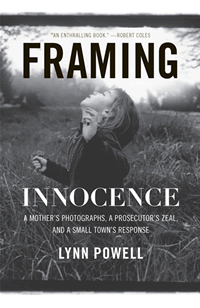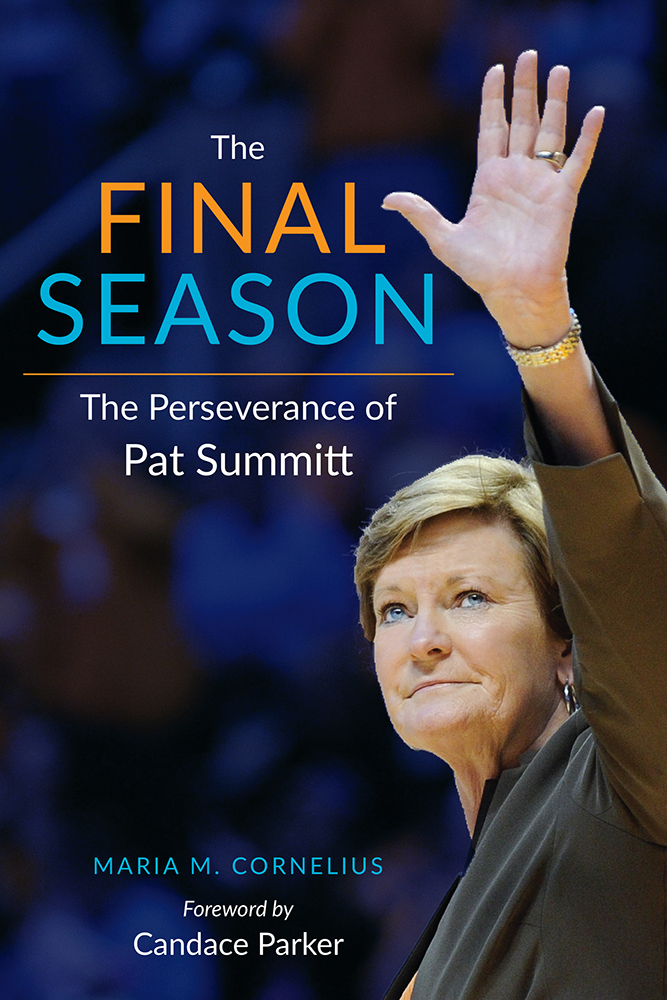Seeing Evil Where There is None
Lynn Powell tells a riveting tale of an innocent mother’s fight against a child-pornography charge
A doting mother takes a few photos of her eight-year-old daughter playing in the bathtub, drops off the film at the local drugstore, and soon finds herself arrested on child-pornography charges. It’s a nightmare scenario few parents believe they could ever face, but in Framing Innocence, author Lynn Powell shows just how easily it can happen. Her detailed account of the case of Cynthia Stewart, an Oberlin, Ohio, mother who faced a felony indictment in 1999 over pictures she took of her daughter Nora, is a riveting tale of one family’s ordeal and a case study of the criminal-justice system gone seriously off the rails.
According to Powell, the close-knit community of Oberlin regarded Cynthia Stewart as a nearly perfect mother. She was thirty-nine years old when she became pregnant with Nora, and, as Powell puts it, she “embraced the unexpected chance to have a child.” Though she and Nora’s father, David Perrotta, chose not to marry, they set up a cozy family nest in a farmhouse on the outskirts of Oberlin, a town of about 8,200 that is home to the college of the same name. Cynthia, an Oberlin College dropout who had stayed on to become a townie, made her living as a school-bus driver. David telecommuted to his job at The Nation magazine. Theirs was a liberal, literary household, and Stewart was committed to raising her daughter as her own unconventional parents had raised her, with minimal exposure to junk culture, and a relaxed, accepting attitude toward her body.
 Stewart was also committed to meticulously recording Nora’s childhood through photographs. At the time of her arrest, she had taken 35,000 photos, most of them featuring her young daughter. Only a small fraction of the pictures were nudes. The two shots that inspired the wrath of the local prosecutor documented a game Stewart played with Nora to ensure she rinsed herself properly in the bath. The pictures showed Nora aiming a handheld sprayer toward her buttocks and vagina. On the basis of those images, Cynthia was labeled a child pornographer and faced a lengthy prison term.
Stewart was also committed to meticulously recording Nora’s childhood through photographs. At the time of her arrest, she had taken 35,000 photos, most of them featuring her young daughter. Only a small fraction of the pictures were nudes. The two shots that inspired the wrath of the local prosecutor documented a game Stewart played with Nora to ensure she rinsed herself properly in the bath. The pictures showed Nora aiming a handheld sprayer toward her buttocks and vagina. On the basis of those images, Cynthia was labeled a child pornographer and faced a lengthy prison term.
The legal proceedings against Stewart took more than a year to play out, and exemplified everything that is problematic about such prosecutions. Most of the people who saw the pictures—including Nora’s court appointed advocate, a fundamentalist Christian and a self-declared anti-child porn crusader—thought they were non-sexual and harmless. Nevertheless, the prosecutor insisted they were “lewd,” and threatened to bring charges against the defense attorney if she showed them to anyone other than subpoenaed witnesses. As the prosecutor interpreted the law, Stewart’s motive in taking the pictures and the fact that they were never distributed or publicly displayed didn’t matter. All that mattered was whether the images might be interpreted as sexual by a person with “average sex instincts.”
It’s hard to imagine how anyone could mount an effective legal defense against such an ill-defined charge, and in the end, Stewart didn’t have to. Thanks to loyal friends in Oberlin and to David Perrotta’s connections at The Nation, the Stewart camp was able to rally a tremendous amount of public support. Donations to her legal fund poured in from across the country in response to a column by feminist writer Katha Pollitt, and supporters closer to home staged protests and letter writing campaigns. Courthouse insiders who felt that the case was politically motivated counseled Stewart’s defenders on how best to bring pressure against the prosecutor.
 Ultimately, Stewart was offered a deal: an end to the prosecution in exchange for mandatory therapy and the destruction of the two offending photographs. Stewart did not have to admit any deliberate wrongdoing. A happy ending, it seems, although the prolonged stress and uncertainty of the legal fight were traumatic for Nora, and, according to Powell, the ordeal irreparably damaged the relationship between Stewart and Perrotta. The two later separated.
Ultimately, Stewart was offered a deal: an end to the prosecution in exchange for mandatory therapy and the destruction of the two offending photographs. Stewart did not have to admit any deliberate wrongdoing. A happy ending, it seems, although the prolonged stress and uncertainty of the legal fight were traumatic for Nora, and, according to Powell, the ordeal irreparably damaged the relationship between Stewart and Perrotta. The two later separated.
Powell, a poet who is originally from East Tennessee, was a neighbor and friend of Cynthia’s, and she played a leading role in the campaign to exonerate her. Powell doesn’t pretend to be a disinterested reporter in Framing Innocence, but what her account may lack in objectivity, it makes up for in intimate knowledge of the events and the personalities involved. She was among the handful of witnesses who were allowed to see the photographs (which she found utterly “unshocking”), and she provides a nuanced portrait of Cynthia Stewart.
In Powell’s telling, Stewart comes across as sympathetic but not without foibles. After the initial meeting with her client, Stewart’s attorney told her secretary, “That woman is going to get screwed because she’s unusual. The system is going to persecute her for her differences.” And, indeed, Stewart’s free-spirited persona and her hippie parenting style may well have driven some of the prosecutorial zeal against her. But Stewart didn’t always help her case, especially when it came to making a deal with the prosecutor. She stubbornly persisted in believing she could persuade him to concede that the pictures were innocent, and even some of her supporters were taken aback when she initially balked—on principle, she claimed—at agreeing to their destruction.
Powell is a gifted writer, and her ability to convey the complex characters and emotions of the Stewart case raises Framing Innocence above other books of its kind. Powell relays the story with all the energy and narrative drive of a novelist but doesn’t stint on documenting the details of the legal proceedings. Avoiding soapbox denunciations of our repressive culture or flawed justice system, she nevertheless presents some thoughtful questions, especially about our peculiar obsession with the danger of images. Noting that she often wrote about her own children’s nudity in her journal, she asks, “What if I were a photographer instead of a poet? Would these little anecdotes, which seemed benign in words, have looked sinister through the wordless lens of a camera?” Such insight seems rare among those who make and enforce the laws to protect children. Powell’s intelligent, beautifully written book may help change that.


